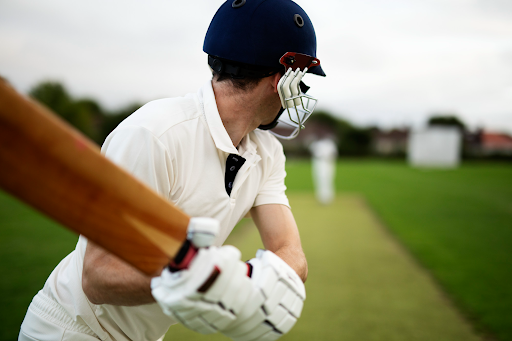How Fitness Levels Have Changed in Cricket
Modern cricket looks nothing like it did a few decades ago. The pace is different. The intensity is brutal. And the expectations? Sky-high. Once seen as a gentleman’s game, cricket has morphed into a sport that demands power, speed, and serious endurance. The era of pot-bellied bowlers or part-time fielders is long gone. Today, elite cricketers train like Olympic athletes. And if you think fitness is just a “nice to have,” think again.
Cricket’s transformation owes a lot to the rise of shorter formats like T20. These matches require high-impact action every minute. Players need to be fast between the wickets, agile in the field, and ready to explode with power. Even recovery routines have changed. Some players now follow schedules more suited to triathletes than traditional cricketers. Surprisingly, even industries like tech and Avia Master development have adopted athlete-style gamified fitness strategies inspired by this transformation.
Back in the Day: Cricket and the Casual Approach to Fitness
Cricket in the 1970s and 80s had a very different vibe. Fitness was more about staying active than sculpting the perfect athlete. Players focused on technique, not six-packs. There were stars with incredible skill but minimal training routines. Some smoked in the dressing room. Others relied on raw talent to outshine opponents.
Training sessions were relaxed. Gym work? Rare. Nutritional plans? Almost non-existent. Bowling spells stretched over long spells, but at moderate effort. Fielders were chosen more for their catching than their sprint speed.
That style worked for the pace of the game back then. Tests were slower. ODIs were limited but still allowed for breathers. And fans were more forgiving. The word “athlete” wasn’t often used for cricketers. But as formats changed, everything else had to catch up.
The T20 Revolution: Turning Point for Fitness
The launch of T20 cricket flipped the script. Everything got shorter. But also faster, louder, and more intense. Suddenly, scoring 200 runs in 20 overs became the norm. That meant sprinting for every run, diving to save every boundary, and turning the field into a high-speed obstacle course.
To cope with this shift, players had to overhaul their fitness. Strength and conditioning coaches became part of every national and franchise setup. Players now train with personal trainers, sports psychologists, and nutritionists.
Batters focus on explosive strength. Bowlers work on endurance and injury prevention. Fielders train with reaction drills and agility circuits. Some routines even borrow from NFL or rugby workouts. It’s not rare to see players do sled pushes, box jumps, and sprints with parachutes strapped to their backs.
T20 also shortened recovery time between matches. Fitness now includes fast recovery methods:
- Ice baths
- Compression therapy
- Deep tissue massages
- Specialized recovery shakes
Without a high fitness level, even the most talented cricketer can burn out.

Fitness Metrics: What Teams Actually Track
Fitness isn’t just about looking lean. It’s measured in data. Modern cricket boards use a range of metrics to track and evaluate player fitness. This helps prevent injuries, optimize performance, and decide match readiness.
Here are some of the core metrics teams focus on:
- Yo-Yo Test Scores: Measures aerobic endurance and recovery ability. Minimum standards are often required to make the squad.
- Body Fat Percentage: Tracked to ensure players stay within the ideal performance range.
- Speed and Agility Tests: Shuttle runs, T-tests, and sprint timings are standard.
- Power Outputs: Measured through vertical jumps and resistance training.
If a player falls short, they might sit out until their numbers improve. No exceptions. Even stars.
This data-driven approach lets coaches personalize training:
- Adjust volume for overworked players.
- Focus rehab for those returning from injury.
- Improve weak zones without overloading strengths.
Off-Season and Match-Day Regimens
Off-season is no longer vacation time. It’s grind season. Most players train six days a week, mixing strength training, skill work, and recovery. Pre-season camps involve tests, long nets, and simulation matches. It’s full throttle.
During tournaments, routines become more focused:
- Morning sessions: Light gym or cardio
- Pre-match: Warm-ups, visualization, reaction drills
- Post-match: Recovery and cooldown
Sleep tracking and nutrition also come into play. Some teams use sleep-monitoring wearables. Diets are tailored for performance—high protein, low junk, and constant hydration. Even caffeine intake is monitored.
Cricketers today live like professional athletes in every sense.
Fitness Legends: Players Who Raised the Bar
Some names stand out when we talk about cricket and fitness. These guys didn’t just perform—they transformed what fans and teammates expected.
Top Examples:
- Virat Kohli: He set new standards in Indian cricket. Went from a chubby rookie to a lean machine. Clean eating, brutal workouts, zero compromises.
- Ben Stokes: Combines brute strength with mental toughness. His endurance is elite. Can bat, bowl, and field for hours without dropping intensity.
- Andre Russell: Built like a tank. Focuses on short bursts of extreme power. Uses explosive training to stay dangerous with bat and ball.
- David Warner: Known for insane running between the wickets. Works on legs, core, and agility.
These guys inspired others to follow. Now fitness isn’t optional. It’s expected.
What Young Cricketers Are Doing Differently
Young talent coming into the system today already gets the drill. They’ve grown up watching the T20 leagues, idolizing players who hustle non-stop. Their routines are next level from day one.
Here’s what they focus on early:
- Gym training by age 15-16
- Specialized diets with professional guidance
- Multi-sport backgrounds for better agility and coordination
- Skill + fitness combos during nets
Many of them also use apps to track progress. Daily logs, sleep cycles, and calorie counts are part of the routine. This early adoption makes them more durable and versatile.
And they recover faster. Thanks to better habits, less junk food, and more structured training, these players can bounce back between matches quicker than their predecessors.
Final Thoughts
Cricket has come a long way from leisurely five-day matches with long tea breaks. Fitness today isn’t just a support pillar—it’s the foundation. Without it, no one survives the modern schedule. Players are faster, stronger, and more durable. They’re treating the game like a profession, not a pastime.
That change isn’t just about lifting weights. It’s about mindset, discipline, and a full commitment to peak performance. Whether it’s a Test match or a late-night T20 under lights, one thing’s clear: only the fittest thrive.




